Want to be a part of the booming ecommerce market? Before you begin, it’s important to understand the cornerstone of ecommerce – the internet.
Internet usage statistics will open your eyes to how the ecommerce market works. In this article, we’ll dig into internet statistics and the most commonly asked questions about the internet such as how many people use the internet, how many websites are there, and how much time does the average person spend on the internet.
Armed with these internet usage statistics, you’ll get a better idea of what your ecommerce business should be like and is up against so that you know just how to craft your digital marketing strategy.
Enough said. Let’s go straight into the very basics of the internet and take a look at the ten most important internet usage statistics all ecommerce marketers and entrepreneurs must know.
Post Contents
- 1. How Many People Use the Internet?
- 2. What Percentage of the World Has Internet Access?
- 3. Number of Mobile Internet Users Worldwide
- 4. How Much Time Does the Average Person Spend on the Internet?
- 5. Internet Usage Statistics in China
- 6. Internet Usage Statistics in the United States
- 7. Google Chrome Is the Leading Mobile Internet Browser
- 8. How Many Websites Are There?
- 9. Domain Name Registrations
- 10. Impact of the Internet on Ecommerce Growth
- Conclusion
- Summary: Internet Statistics
- Want to Learn More?



1. How Many People Use the Internet?
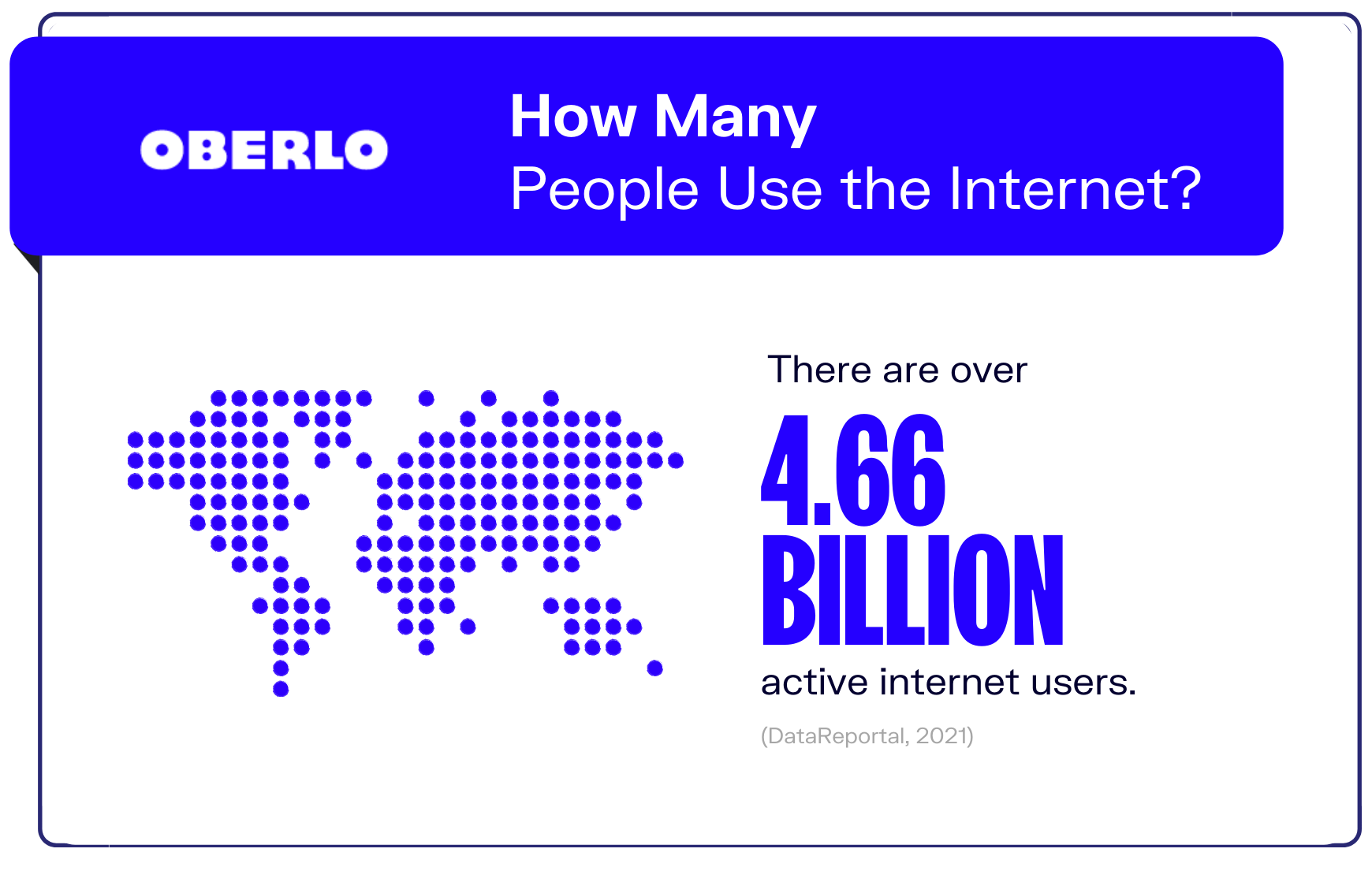
One of the first internet usage statistics you need to know is how many people use the internet.
As of the start of 2021, there are 4.66 billion active internet users (DataReportal, 2021). That marks a 316 million year-over-year increase compared to 2020’s figures. At 7.3 percent, the growth in active internet users worldwide is more than seven times faster than the total population growth, which stands at one percent.
Considering there’s a global population of 7.83 billion people, that equates to an internet penetration rate of approximately 59.5 percent. In other words, more than half of the population worldwide are active internet users.
And with so many things to do online, it’s also important to know other internet usage statistics and more importantly, the top uses of the internet.
Finding information is the most popular activity carried out by internet users: more than six out of every ten internet users browse and search for information online. This is followed by staying in touch with friends and family (56.6 percent), keeping up to date with the latest news and events (55.6 percent), and watching videos, TV shows, and movies (52.5 percent).
2. What Percentage of the World Has Internet Access?
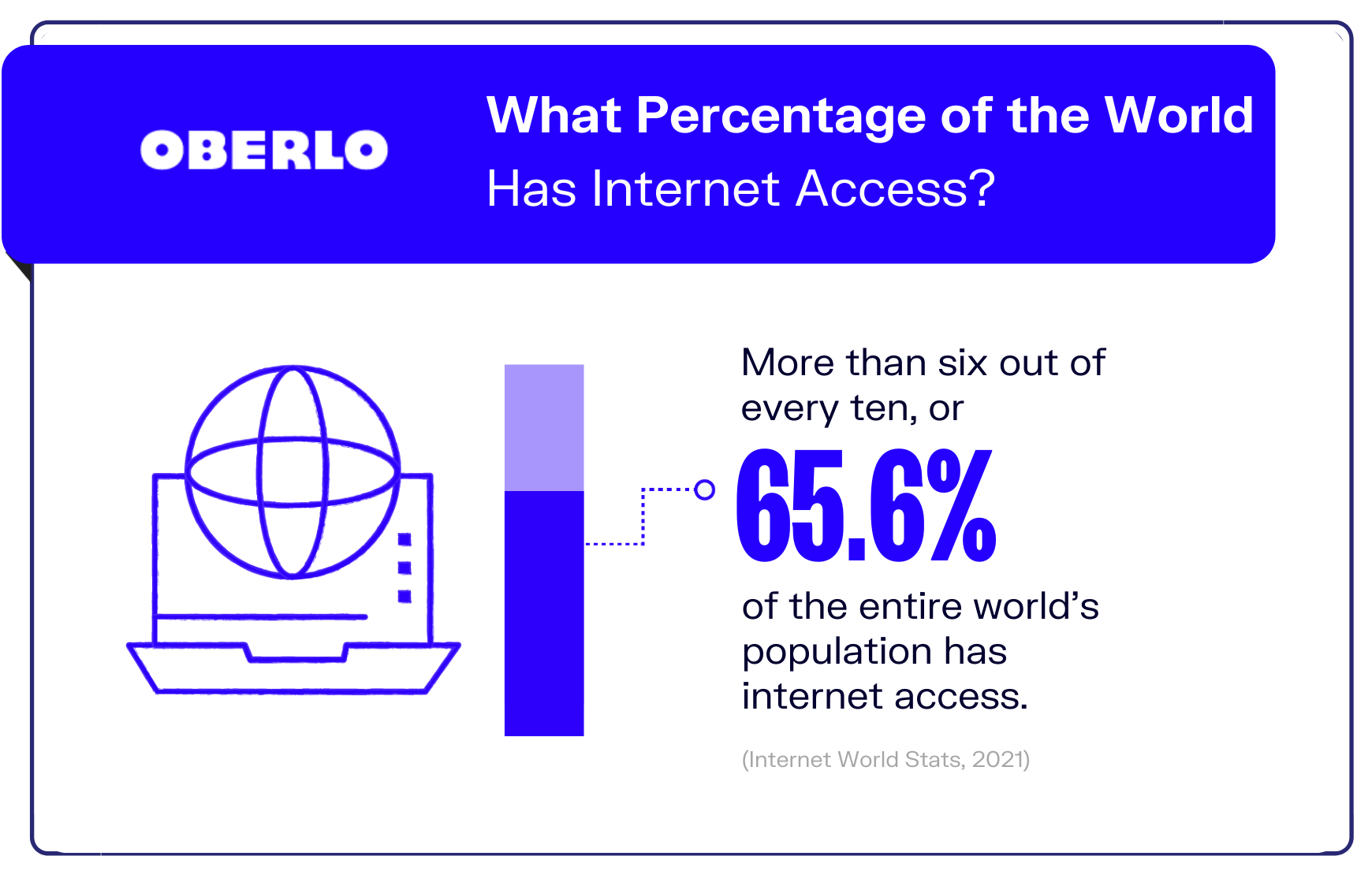
The world has come a long way since the internet was made publicly available in 1991 – 30 years ago now. Nine years later at the turn of the millennium, 361 million people around the world had access to the internet.
Fast-forward two decades more to today, over six out of every ten, or 65.6 percent, to be exact, of the entire world’s population has internet access (Internet World Stats, 2021).
It should come as no surprise that, as the largest and most populous continent, Asia is home to the majority of global internet users.
In fact, nearly one quarter (24.4 percent) of the world’s internet users are located in East Asia – the region with the largest number of internet users.
This is followed by South Asia with 17.7 percent and Southeast Asia with 9.9 percent of the world’s internet users.
Despite the prevalence of internet usage in Asia, it’s Africa that has the fastest-growing online population. Most of the fastest growing online populations are based in Africa, with the Republic of the Congo leading the charge – as of January 2020, the number of internet users in the country grew 126 percent year-over-year.
3. Number of Mobile Internet Users Worldwide
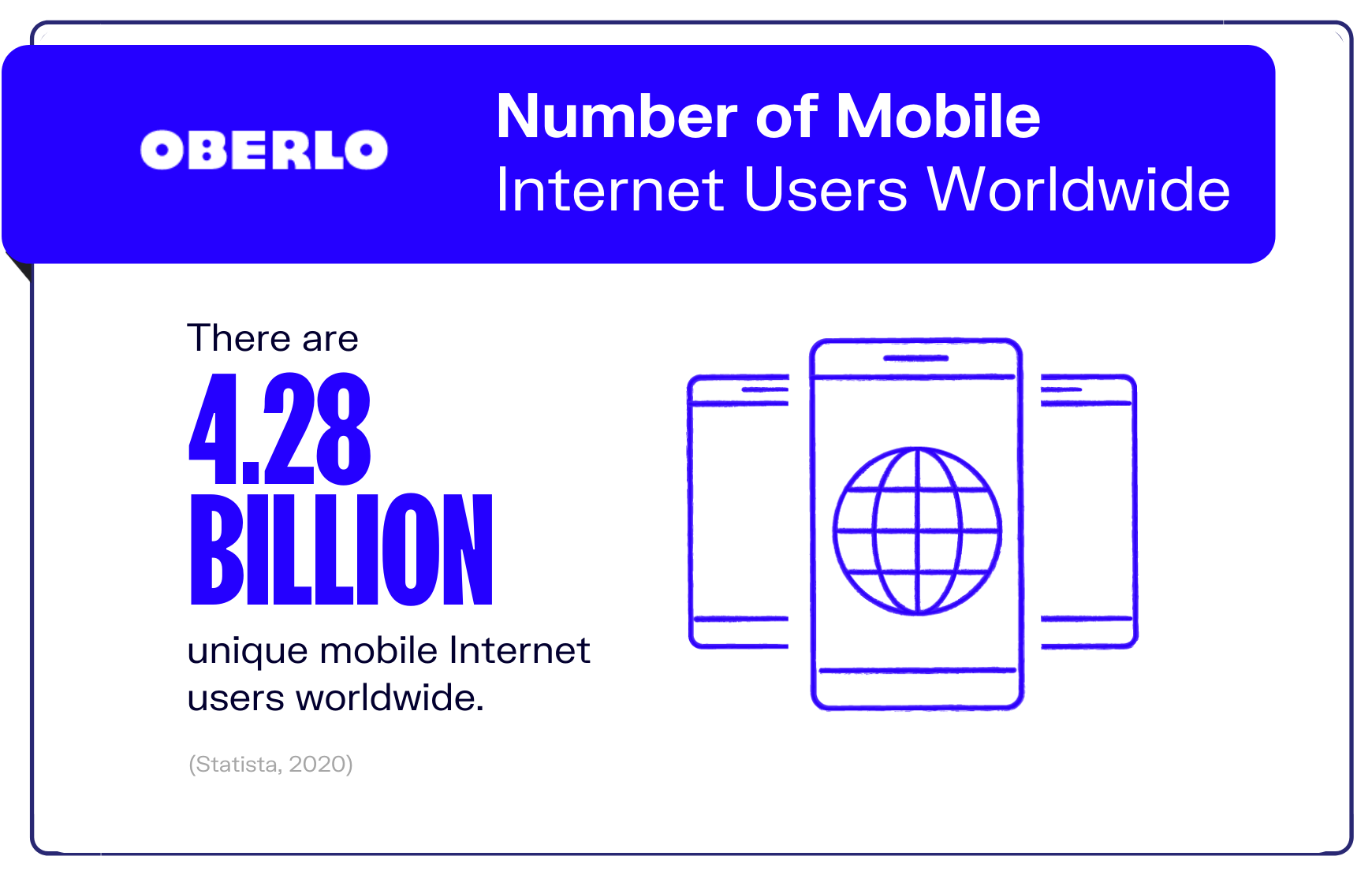
There are currently 4.28 billion unique mobile internet users worldwide, representing around 54.6 percent of the global population (Statista, 2020).
That means that out of the 5.2 billion mobile phone owners in the world, more than eight in ten use their phones to access the internet.
In fact, mobile phones are the most popular device with which users access the internet – 50.2 percent of overall web traffic comes through mobile phones. That’s even more than laptops and computers (47.1 percent) and tablet devices (2.6 percent) combined.
And it probably wouldn’t be surprising if the number of mobile internet users continues to grow. This is especially likely because of the increasing speeds of mobile internet connections, which increased by 22 percent from 2019 to 2020.
4. How Much Time Does the Average Person Spend on the Internet?
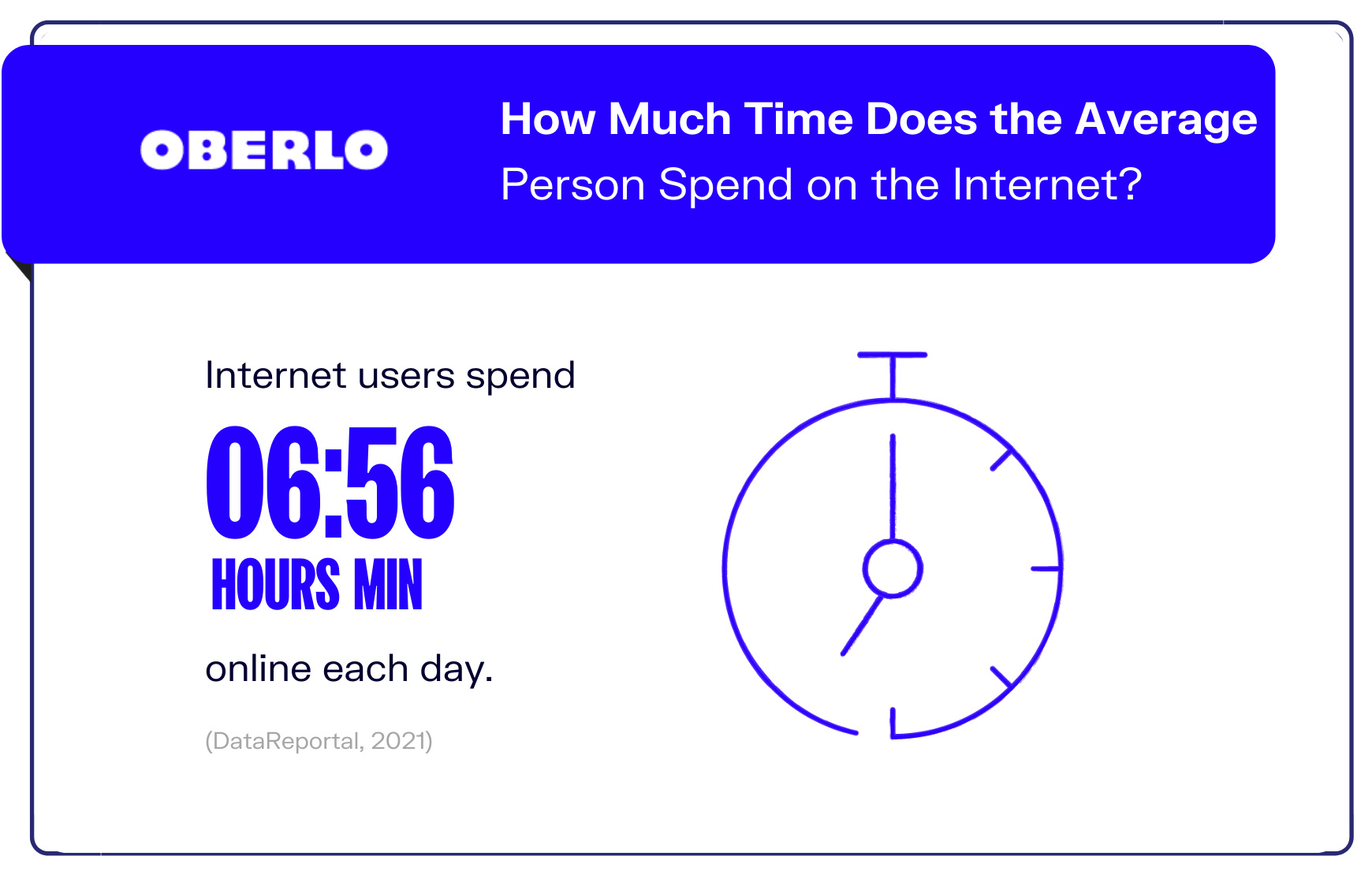
Given that there are so many things to do online, the next internet usage statistic shouldn’t surprise many – on average, internet users spend 6 hours and 56 minutes online each day (DataReportal, 2021).
As an ecommerce business owner, you may be interested to know just how internet users are spending their time on ecommerce activities online.
The latest figures show that 92.2 percent of internet users visit online stores, 81.8 percent carry out online searches for a product or service to purchase, and 78.6 percent follow through with their purchases.
Online shopping and browsing aside, social media is also where internet users spend a large bulk of their time. In fact, the average person spends two hours and 22 minutes a day on social media, with most of this time spent on Facebook and TikTok.
5. Internet Usage Statistics in China
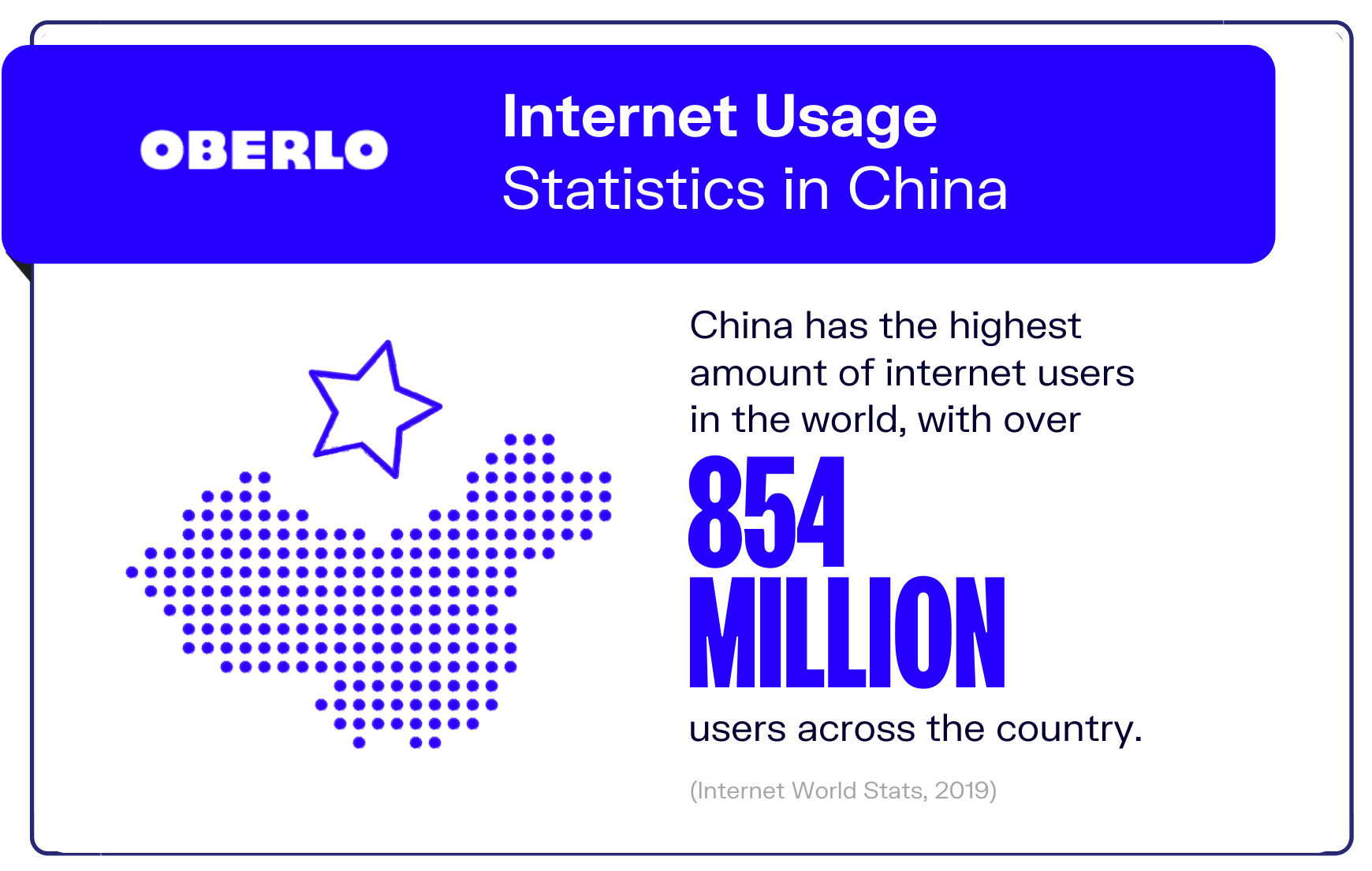
With Asia home to more than half of the internet users worldwide, let’s take a look at the breakdown of internet usage statistics in the continent’s most populous country – China.
Not only is China a major player in ecommerce sales, but it is also the country with the highest number of internet users in the world, home to 854 million internet users (Internet World Stats, 2019).
That’s approximately 60 percent of its total population of 1.4 billion and represents more than one-third of all internet users in Asia.
Of those, nearly all (99.1 percent) are mobile phone users, the number of which is also increasing.
This is impressive growth for China, which, back in 2000, had just 22.5 million internet users. In other words, the number of internet users in China has multiplied nearly 38 times in less than two decades.
6. Internet Usage Statistics in the United States
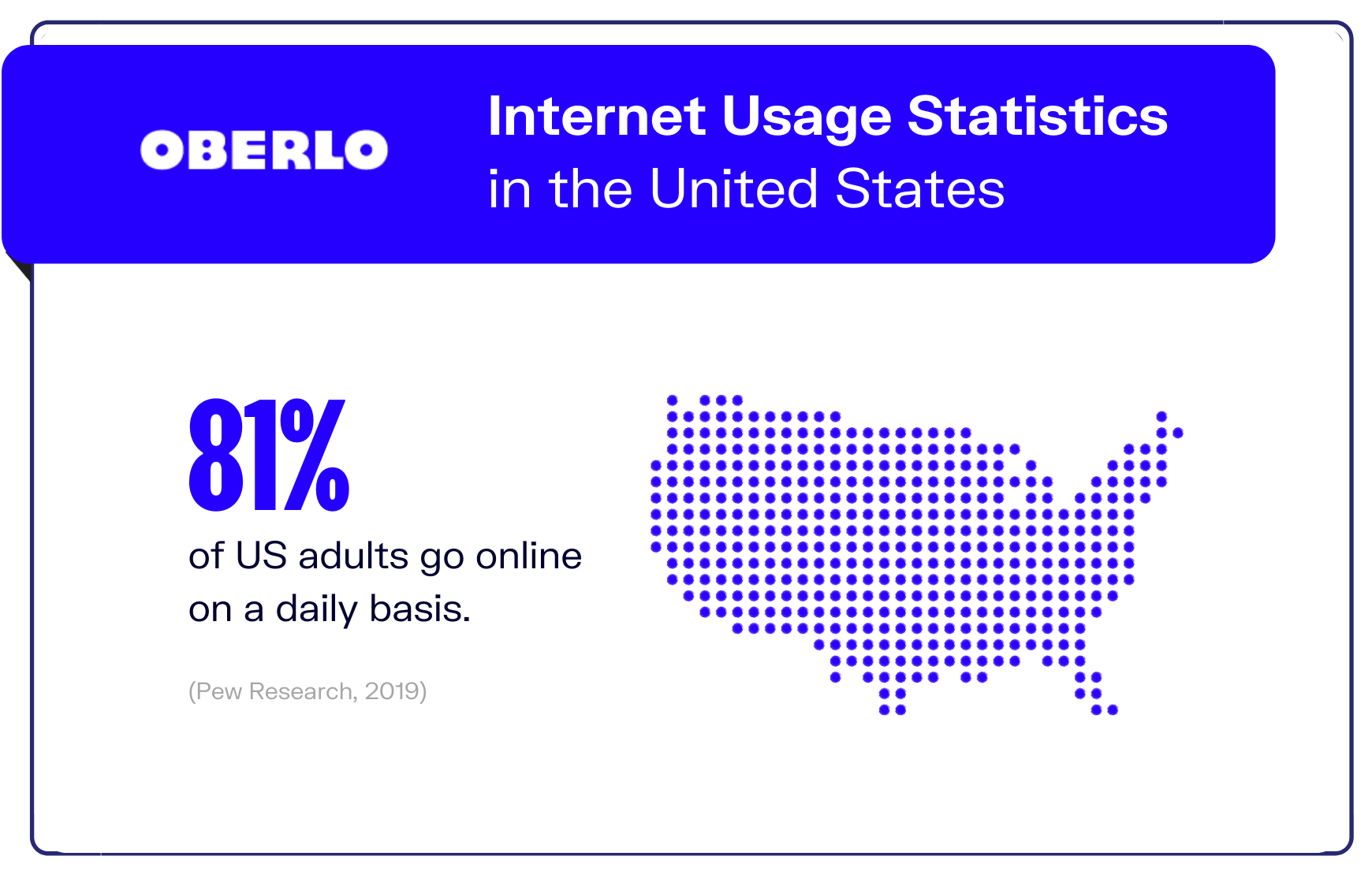
Whether it’s texting, sending emails, checking the latest movie reviews, looking for products to buy online, or simply browsing, it’s clear that the internet plays a pivotal role in consumers’ daily activities.
So much so that 81 percent of US adults go online on a daily basis (Pew Research, 2019). Of the remaining people who report that the internet doesn’t feature in their daily lives, less than 8 percent do not access the internet daily and 10 percent say they never use the internet.
Having a mobile internet connection appears to be one of the biggest (if not the biggest) determining factors of whether US adults go online. 86 percent of Americans frequently go online with a mobile device. More than nine out of ten of them do so every single day.
Unsurprisingly, youngsters appear to be the leading group of internet users in the US. Nearly half of all US adults aged between 18 and 29 go online frequently throughout the day.
7. Google Chrome Is the Leading Mobile Internet Browser
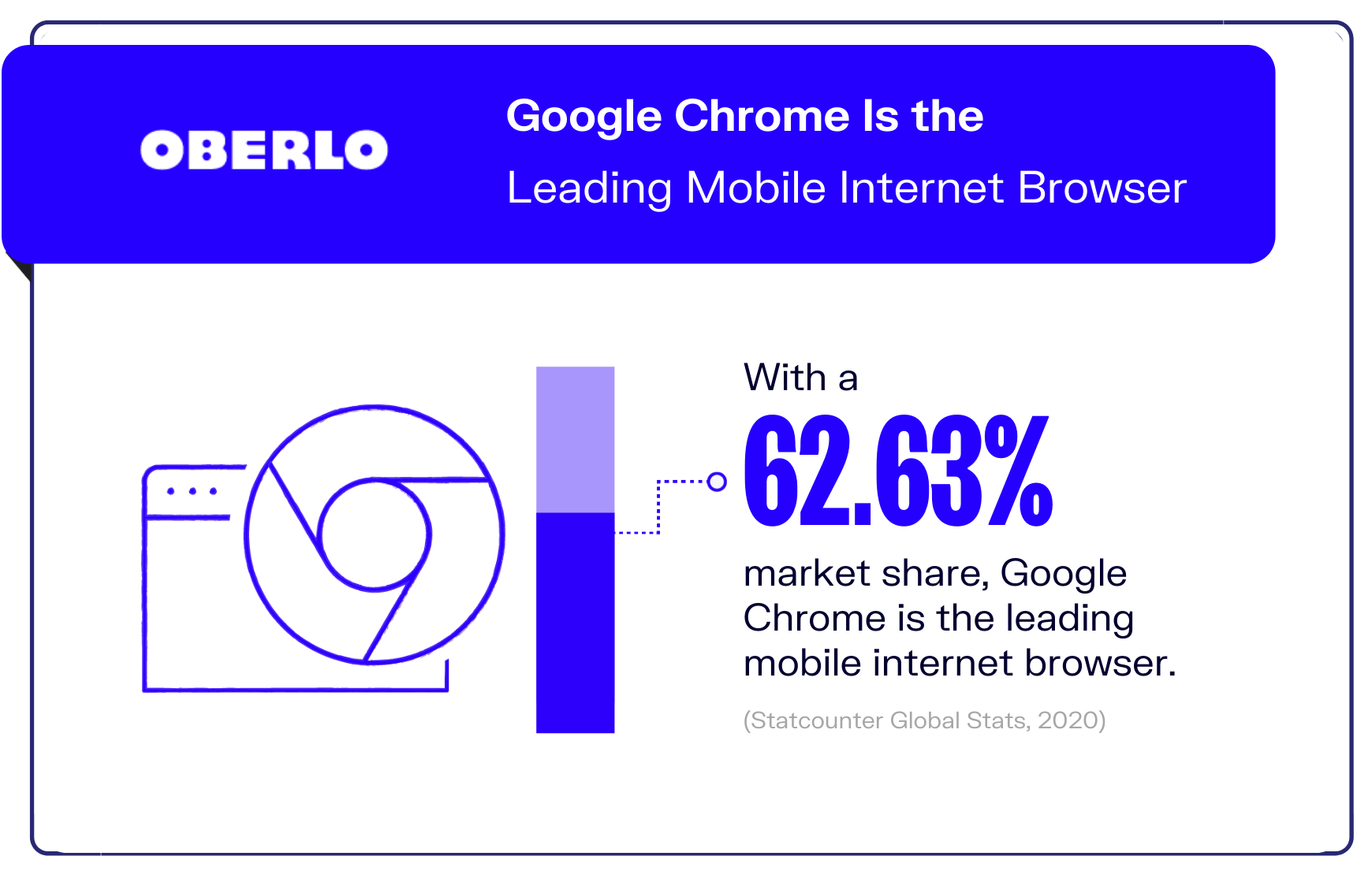
Google Chrome browser is the leader in the mobile internet browser market, with a share of 62.63 percent (StatCounter Global Stats, 2020).
The market dominance of Google Chrome is somewhat expected, considering nearly three out of every four mobile phones worldwide run on Android and that until late 2018, Google Chrome came pre-installed on all Android phones and tablets.
Google Chrome’s mobile internet browser market share is more than two times that of second-placed Apple’s Safari, which has a market share of 24.55 percent.
The numbers are evidence of Google Chrome and Safari’s firm grip on the mobile internet browser market. To put their dominance into perspective, consider this internet statistic: nearly nine out of ten (87.18 percent) mobile internet users browse with either Chrome or Safari.
But before launching into mobile marketing on Google Chrome for your ecommerce business, it’s important to consider your target audience and market.
For instance, Safari is actually the leading mobile internet browser in the United States. It has a market share of 57.22 percent in comparison with Google Chrome’s 35.75 percent.
8. How Many Websites Are There?
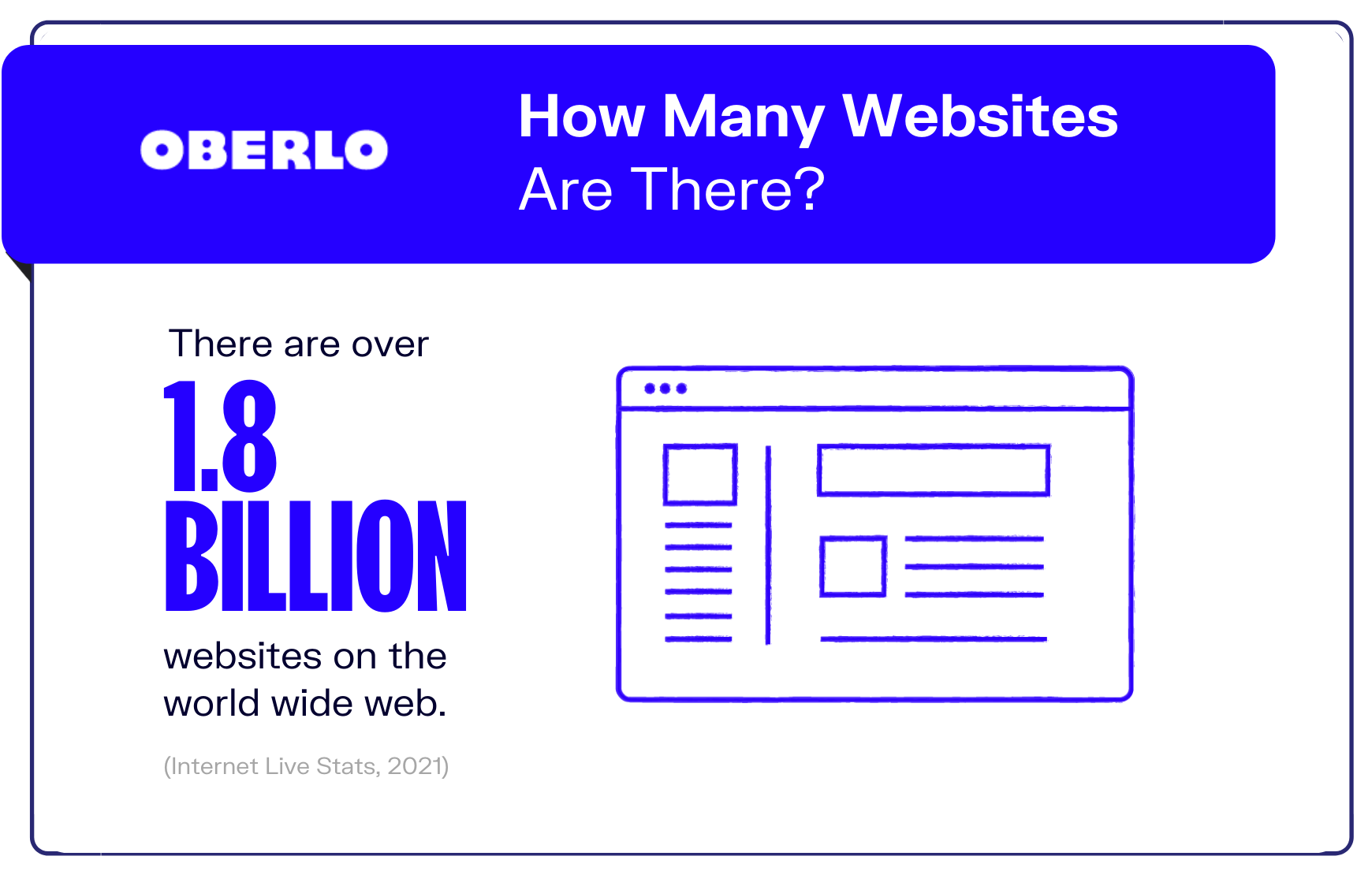
The very first website was launched in August 1991, by none other than Tim Berners-Lee, the creator of the worldwide web himself.
The number of websites has been rising ever since, with the worldwide web adding thousands of new websites in its initial years, before ballooning to millions of new websites added annually even before 2000.
Today, there are over 1.8 billion websites on the world wide web and counting (Internet Live Stats, 2021).
The majority of websites are currently being hosted by US company GoDaddy, which, home to over 1.76 million registered domains, currently holds 16.84 percent of the web hosting market share. This is followed by Google Cloud Web Serving with a market share of 10.01 percent and AWS Web Hosting with 8.74 percent.
9. Domain Name Registrations
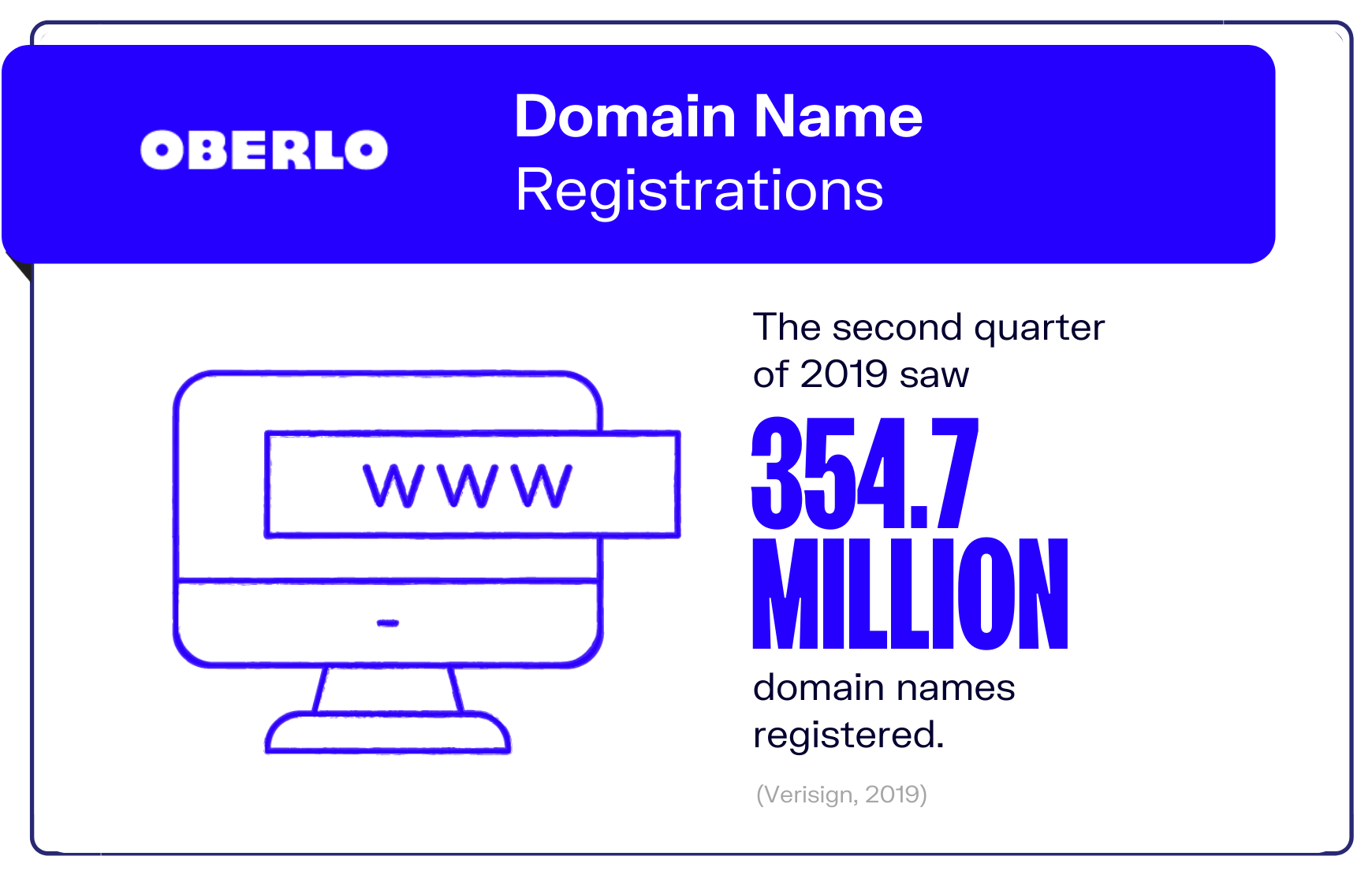
It appears everyone’s looking to get in on online opportunities with an increasing number of domain name registrations.
The second quarter of 2019 saw 354.7 million domain names registered (Verisign, 2019). This marks a 0.8 percent increase from the previous quarter and a 4.4 percent year-over-year growth.
Domain names ending in .com and .net are proving to be particularly popular, making up 142.5 million (or 40 percent) of all registrations.
Of these, the focus appears to be pretty scattered over different industries and genres. The most popular keywords used in .com and .net registrations include “libra”, “son”, “abuse”, “boy”, “dragon”, “education”, “drug”, “names”, “alcohol”, etc.
Home to the largest group of internet users, there were 23 million registrations on China’s .cn domain. In fact, .cn leads the list of the most popular country-code domain names. Tokelau’s .tk (Tokelau) and Germany’s .de are pretty close behind with 22.5 million and 16.2 million domain names respectively.
10. Impact of the Internet on Ecommerce Growth
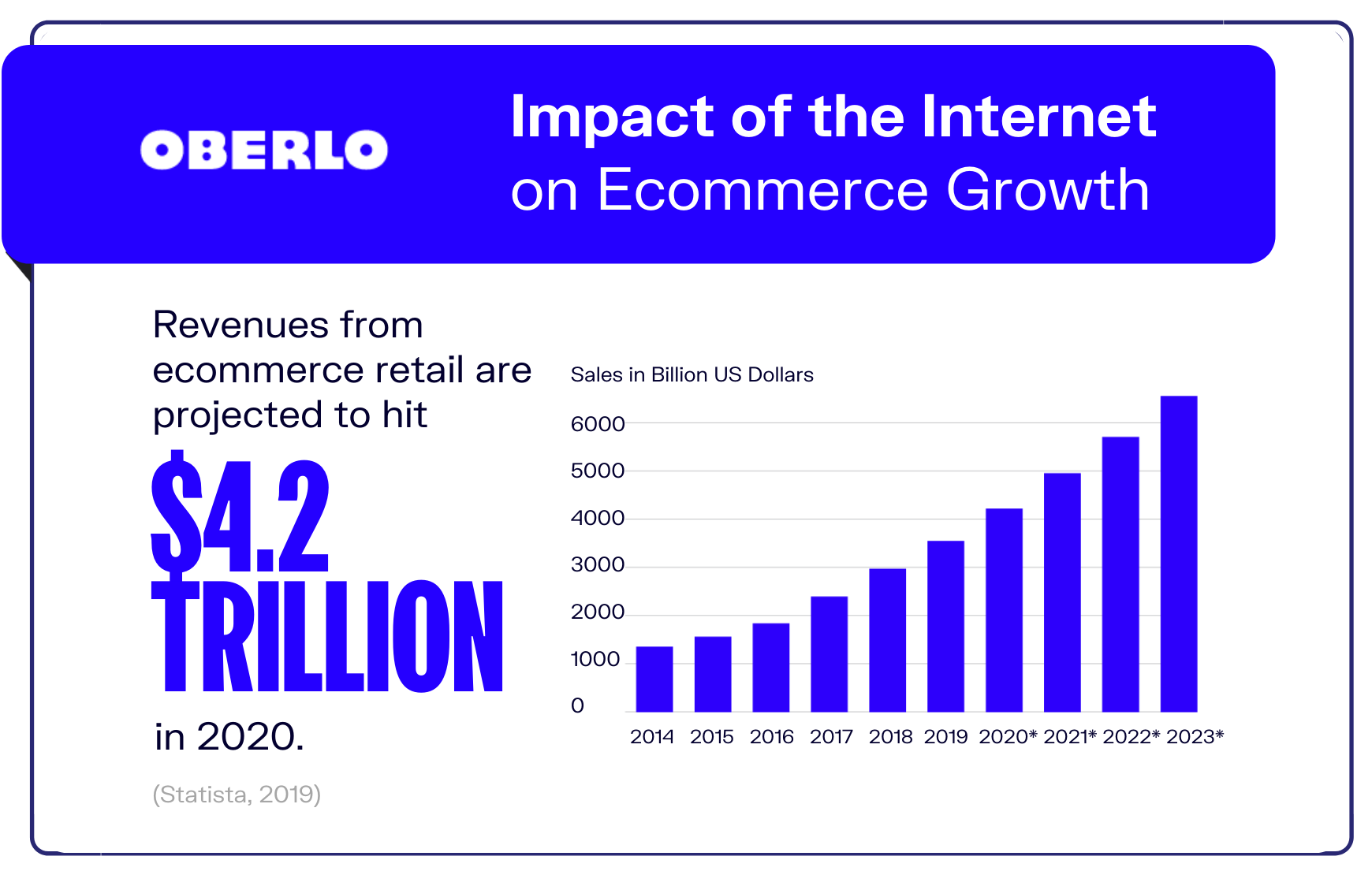
Revenues from ecommerce retail are projected to hit $4.2 trillion in 2020 – more than triple the $1.3 trillion registered in 2014 (Statista, 2019).
As the country with the most internet users, China is also the world’s top ecommerce market. The Asian giant is expected to bring in $1.935 trillion in ecommerce sales this year, more than triple that of its closest rival, the United States, and more than half of the global ecommerce market.
Not only has the internet brought about significant ecommerce growth, but the online potential has also spurred ecommerce businesses to increase their digital marketing expenditure.
Expenditure on digital ads is expected to reach one-third of a trillion dollars in 2019, a 17.6 percent increase from the previous year. This is expected to continue growing and eventually breach half a trillion dollars by 2023.
Conclusion
With so many internet users spread across all corners of the globe, the internet is truly a goldmine of opportunities for ecommerce business owners.
Hopefully, these eye-opening internet statistics will be useful to you.
Now that you’re equipped with some of the most important internet usage statistics, you’re ready to take the next step in your digital marketing plan. Be it email marketing or social media marketing, as long as you keep these internet statistics in mind, you’ll be on the right path.

Summary: Internet Statistics
Here’s a summary of the Internet Statistics for 2021:
- There are currently 4.66 billion active internet users worldwide.
- 65.6 percent of the entire world’s population has internet access.
- There are 4.28 billion unique mobile internet users worldwide, which makes up 54.6 percent of the global population.
- Internet users spend an average of 6 hours and 56 minutes online every day.
- Home to 854 million netizens, China is the country with the highest number of internet users.
- Eight out of every ten US adults go online daily.
- With a 62.63 percent market share, Google Chrome is the leading mobile internet browser.
- Today, there are over 1.8 billion websites on the world wide web.
- The second quarter of 2019 saw 354.7 million domain names registered.
- Revenues from ecommerce retail are projected to hit $4.2 trillion in 2020.



Want to Learn More?
- Whois Lookup, Domain Availability & IP Search Tool by Shopify
- Ecommerce SEO: 8 Tips to Help Your Online Store Rank Better
- 11 Best Free PDF Editor Tools in 2021
- 35 Small Business Ideas That’ll Make You Money in 2021
Is there anything else you’d like to know about internet statistics and wish was included in this article? Let us know in the comments below!



